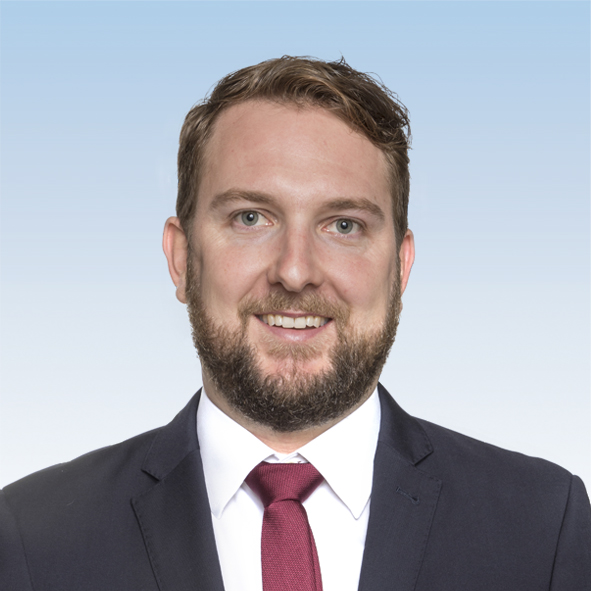Recent legislative changes have finally cleared a regulatory pathway for the offshore wind industry to proceed. A significant surge of activity in the offshore wind sector is now inevitable as Australia emulates what has occurred in Europe and other parts of the world, in an accelerated fashion, leveraging improved knowledge in many technical disciplines.
The key differentiator that WSP offers is the ability to factor in valuable learnings from past industry mistakes made during offshore activities in the Australian oil and gas sector due to unforeseen seabed conditions. There is much overlap with the offshore wind industry in terms of civil engineering, especially geotechnology, which is a specialist area for WSP. This is the most significant area of difference between onshore and offshore wind farm developments and deserves careful consideration.
We sat down with specialists from our Offshore Geotechnical team, Dr Ian Finnie, Technical Director, Dr Mark Richardson, Principal Geotechnical Engineer and Ben Holland, Principal Geotechnical Engineer, to explore how the emerging Australian offshore wind industry can learn from the past to avoid unnecessary geotechnical risks.
Site survey challenges in Australia
Ian highlights the importance of getting good advice early in the project development cycle to avoid foreseeable events potentially derailing project development.
“Offshore developments require geophysical and geotechnical seabed surveys and these present one of the earliest major cost outlays in the project development cycle,” he says. “Australia presents some key differences from other regions, both technically and commercially. The considerable cost of mobilising suitable geotechnical investigation equipment into this region is often not fully anticipated by projects and can result in adverse commercial planning and, consequently, poorly executed investigations that don’t necessarily meet the project requirements. It should be appreciated that performing a seabed survey is not just a box-ticking exercise, as it provides value-adding information that enables cost savings within the project development. On the other hand, lack of seabed information often has disproportionately large deferred cost implications in terms of design and construction.”
Ian suggests that clients can generally avoid this problem by seeking early advice from authentically independent experts.
“Some consultants are aligned to site investigation contractors and may be tempted to endorse an approach that is not necessarily in their clients’ best interests. Alternatively, some clients may rely solely on the advice of the prospective site investigation contractors, which also presents obvious risks. Some advisors know about seabed surveys, but don’t appreciate design and construction requirements. The challenging nature of the calcareous seabed sediments around Australia, which are largely different from other regions, means that unsuitable equipment can be mobilised and fail to recover useful data and samples, leading to cost over-runs, significant project delays and increased risk exposure.”
Ian recalls the accepted wisdom that good consultancy advice pays for itself by optimising costly data acquisition activities.
“The seabed conditions can usually be anticipated, and this means that the site investigation equipment can be rationally selected. Given the high cost of mobilising equipment, the overall strategy for performing preliminary and final site investigations often differs in Australia compared to other regions, like the North Sea,” he says.
“The knock-on effects of sub-optimal site investigations to the overall project development should not be underestimated.
“Issues with seabed surveys have happened repeatedly in the past in Australian oil and gas developments, with adverse consequences sometimes only emerging at later stages in the project development cycle, such as during construction, where there is often a disproportionately amplified financial exposure. Inadequacies in the survey activities are sometimes not identified in time for them to be addressed by the project, i.e. when the site investigation equipment is deployed. This can result in compensating over-conservatism in design or, even worse, significant problems during construction requiring costly remedial work.”
Ian highlights the commercial advantage of getting good geotechnical advice.
“The solution to this problem is simply for the developer to increase their awareness by getting timely, reliable and truly independent advice, which is what WSP has been doing around the world and now in Australia. From a purely commercial perspective, this approach presents a real strategic opportunity for clever offshore wind operators to get ahead of their competition by eliminating geotechnical risks.”
There's much to learn from past mistakes
Mark explains that the offshore wind industry can learn much from experiences such as the design and construction of the North Rankin A gas platform in the 1980s, which was the largest offshore platform in Australia at the time.
“Despite fundamental differences in the energy sources, there are considerable technical parallels between offshore wind and oil and gas,” says Mark.
“In fact,” says Mark, “offshore wind developments have less in common with land-based wind farms than with the offshore oil and gas industry – because of the key requirement for a safe, stable and resilient structure connected to the seabed in challenging environmental conditions.
“The challenges encountered at North Rankin were due to an inadequate understanding of the local seabed. The frictional capacity of the foundation piles was calculated using methods that were applicable for siliceous soils found in the Gulf of Mexico and North Sea but were unsuitable for the friable carbonate sediments found on the Northwest Shelf of Australia.
“The trouble with carbonate sediments is that when you shear the typically hollow particles, they tend to crush and collapse, leading to a reduction in normal stress and as a result a loss of friction on the piles.
“This was what happened at North Rankin. Due to inadequate shaft friction – as low as 10% of what had been anticipated – unexpected free-fall of up to 65 m occurred while driving the foundation piles. The extremely low shaft frictions encountered ultimately meant that the piles were not capable of supporting the weight of the platform.”
The remediation efforts were drawn out and extremely expensive. In 1988, the cost of remediation was estimated at $340 million, not including losses in production.
Ben argues that the experiences of North Rankin, amongst others, show that the ‘received wisdom’ from similar operations in other areas of the world isn’t necessarily directly applicable to Australian developments.
He says, “This is really important for the emerging offshore wind industry. Indeed, there are many offshore wind farms in Europe and some Asian nations, but no one should assume that those designs will necessarily be suitable around Australia.
“Seabed conditions are highly variable, even within a potential development site – so developers are less likely to run into future geotechnical design and installation challenges if they engage consultants with specific local expertise to help specify thorough site surveys to best understand the local seabed bathymetry and composition.
“Without this information, design and construction can go horribly wrong with any remediation expected to be complex, expensive and time-consuming to implement.
“Ultimately, a relatively small amount of good quality advice, at an early stage of a project, can equate to tens of millions of dollars of savings in survey execution costs and mitigation of subsequent engineering and construction risks.”
It represents a rational step to the successful execution of a competitive project.
Find out more about our offshore geotechnical capabilities by contacting Dr Ian Finnie, Dr Mark Richardson, and Ben Holland.
To stay abreast of our latest information, publications, videos and posts, please subscribe to our news, follow us on LinkedIn or visit wsp.com/au




